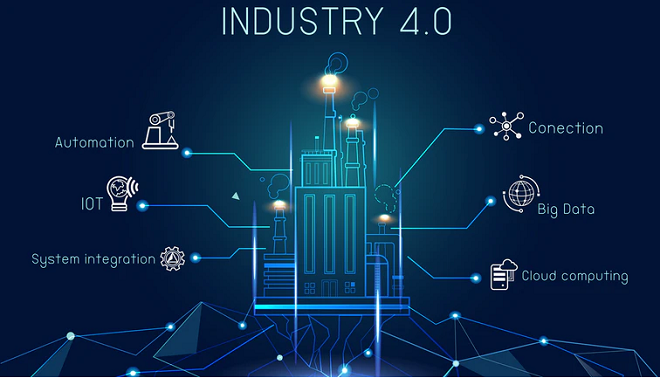With our relationship to connectivity and technology changing so rapidly, we’re seeing spaces we previously viewed as being offline become “smart” hubs — homes, businesses and even entire cities. This Internet of Things (IoT) is constantly expanding to encompass new devices and systems capable of communicating, sharing data and, in some cases, facilitating automation.
The manufacturing sector is no exception, as factories and supply chain processes harness IoT devices to ramp up efficiency and capture valuable performance data. In fact, some experts recommend that IoT in logistics, transportation and manufacturing will reach $40 billion in 2020.
The expanding IoT is one pillar of so-called Industry 4.0, or this new and more intelligent era of manufacturing. Here’s more on what Industry 4.0 entails and how enterprises can achieve it.
Industry 4.0: An Overview
Industry 4.0 is more than a type of technology or a business title. As Tech Rader outlines, it’s an entirely revamped approach— one that harnesses digitization to streamline operations, maximize inefficiency and address pain points.
A key tenet of this fourth-wave industrial revolution is the subsequent harnessing of data, thanks to machine to machine (M2M) communication. That is, IoT-powered devices can collect an unprecedented amount of data about various processes and store it to be analyzed and acted upon.

Access to more robust manufacturing and sales analytics empowers teams to deep dive into every aspect of performance imaginable — sales trends, process bottlenecks, equipment maintenance, energy consumption, delivery times, inventory levels, product quality, etc.
The ability to pull near-instant insights about relevant tasks and workflows helps analytics users — all kinds of employees throughout a company — improve their decision-making and optimize business outcomes.
Another aspect of Industry 4.0 that goes hand-in-hand with the rise of IoT is more advanced automation. As Deloitte Insights outlines, manufacturers have traditionally been able to automate a “single, discrete task or process” at a time — like opening a valve or activating/deactivating a pump based on programmed rules.
But the increasing connectivity of IoT-powered devices, along with advancements in artificial intelligence (AI) is expanding the envelope on automation — facilitating complex decision-making that used to require manual human intervention. When machines can self-optimize in this way and use machine learning to continually learn from conditions and outcomes, “smart” factories become even more efficient and autonomous.
Industry 4.0 and Smart Factories in Action
Increased connectivity, automation and data leveraging are poised to improve many areas of operations — across production, supply chain logistics and commerce.
Here are a few examples.
Minimize Equipment Downtime/Malfunction
Outfitting machinery with sensors capable of transmitting data back to analytics dashboards allows engineers and maintenance teams to quickly identify issues — which they can then quickly mitigate. The ability to provide timely maintenance and troubleshooting can help prevent more costly and detrimental breakdown, which would slow production even more.
As one expert shares for Forbes, a gold mine in Africa used data from sensors to pinpoint an ongoing issue with oxygen levels. Upon fixing it, yield went up by nearly four percent — which translated to about $20 million yearly in savings.
Optimize Workforce Management
Seemingly small inefficiencies really add up when multiplied across large workforces, so companies are using data collected by sensors to determine how to best assign workers to different jobs and locations.
Improve Energy Efficiency in Facilities
Energy is a significant overhead cost, so enterprises are using IoT to understand energy usage, predict future demands and identify inefficient systems.
For example, data from heat sensors may reveal an outdated piece of equipment is consistently wasting energy by running at a higher-than-ideal temperature. Only then can the company address this issue, either by making a repair or replacement or modernizing the machine in question.
Industry 4.0 is helping companies throughout the production supply chain lower costs, boost revenue and optimize performance overall through IoT-connected devices and M2M communication.

